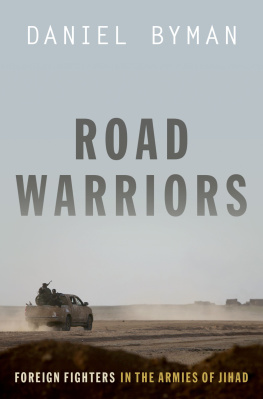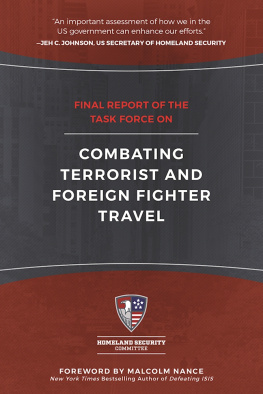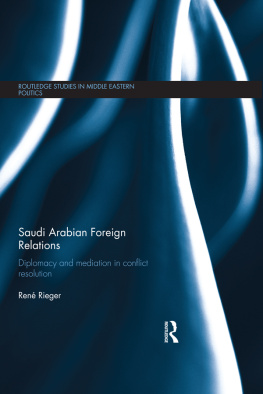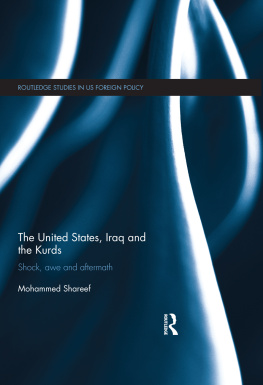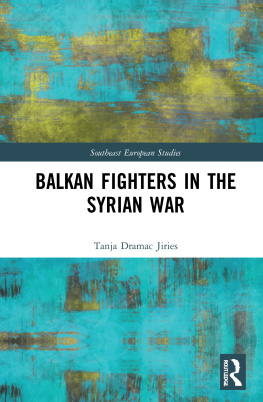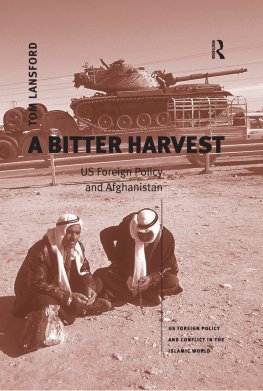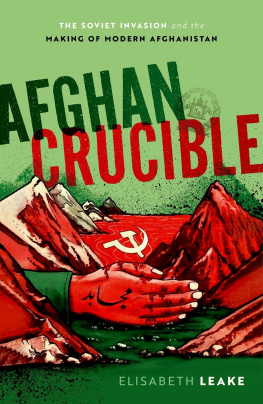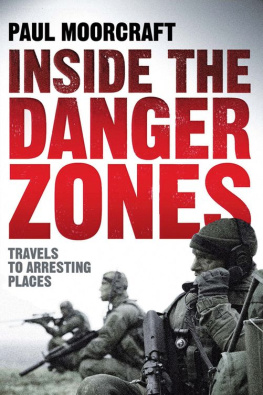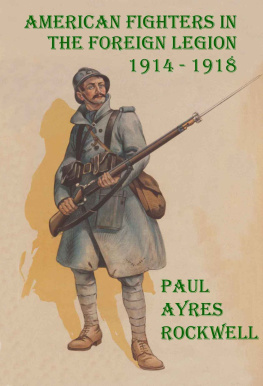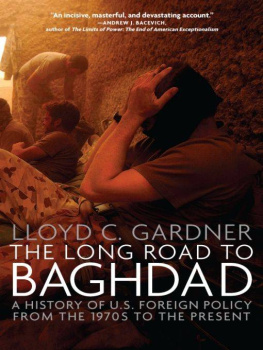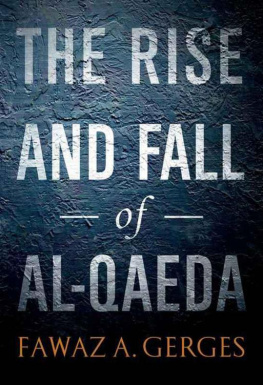- Leaving the Islamic State
- The Terrorism Threat
- Thinking beyond the Plot Stage
Road Warriors

Oxford University Press is a department of the University of Oxford. It furthers the Universitys objective of excellence in research, scholarship, and education by publishing worldwide. Oxford is a registered trade mark of Oxford University Press in the UK and certain other countries.
Published in the United States of America by Oxford University Press
198 Madison Avenue, New York, NY 10016, United States of America.
Daniel Byman 2019
All rights reserved. No part of this publication may be reproduced, stored in a retrieval system, or transmitted, in any form or by any means, without the prior permission in writing of Oxford University Press, or as expressly permitted by law, by license, or under terms agreed with the appropriate reproduction rights organization. Inquiries concerning reproduction outside the scope of the above should be sent to the Rights Department, Oxford University Press, at the address above.
You must not circulate this work in any other form and you must impose this same condition on any acquirer.
Library of Congress Cataloging-in-Publication Data
Names: Byman, Daniel, 1967- author.
Title: Road warriors : foreign fighters in the armies of Jihad / Daniel Byman.
Description: New York, NY, United States of America : Oxford University
Press, 2019. | Includes bibliographical references and index.
Identifiers: LCCN 2018036698 (print) | LCCN 2018040087 (ebook) |
ISBN 9780190646523 (Universal PDF) | ISBN 9780190646530 (E-Pub) |
ISBN 9780190646516 (hardback : alk. paper)
Subjects: LCSH: TerroristsRecruiting. | TerrorismPrevention. |
TerrorismReligious aspectsIslam. | Jihad.
Classification: LCC HV6431 (ebook) | LCC HV6431 .B967 2019 (print) |
DDC 363.325dc23
LC record available at https://lccn.loc.gov/2018036698
Contents
Leaving the Islamic State
The Terrorism Threat
Thinking beyond the Plot Stage
Many friends and colleagues helped me research and write this book, and a brief note of thanks does not do justice to all they did on my behalf.
This book grew out of a short research project I began with my then Brookings colleague Jeremy Shapiro. He and I traipsed around Europe together, and his many insights, though not his sardonic good cheer, stayed with me as I continued this research. In addition, I had initially planned to coauthor this book with another colleague, Jenn Williams, but she moved on to bigger things. Jenns ideas remain in the DNA of this book, including the title. My friend Ken Pollack is always there when I need him, and he is a constant source of ideas and inspiration. No matter what Im working on, Ken spots the toughest problems quickly and then shows me the path out.
Many young researchers assisted me as I did my research. They include Sarah Gilkes, Eliora Katz, Isabelle Mahnke, Ian Merritt, Sam Miller, Israa Saber, Samantha Stern, and Ahmed Zuhairy. Particular thanks go to Zann Isacson for the extensive work she did as a research assistant and editor and to Sahira Akram for her help with Arabic-language sources.
I also benefited from the wisdom of many colleagues and experts who offered insights, read drafts of chapters, shared data, or otherwise kindly offered assistance. Thanks go to Audrey Alexander, Amarnath Amarasingam, Tricia Bacon, Christine Fair, Mohammed Hafez, Stig Jarle Hansen, Thomas Hegghammer, Julie Chernov Hwang, Seamus Hughes, Shiraz Maher, David Malet, Carter Malkasian, William McCants, Chris Meserole, John Mueller, Peter Neumann, Michael OHanlon, Jacob Olidort, Truls-Hallberg Tnnessen, Manuel R. Torres Soriano, Lorenzo Vidino, Pope Ward, Benjamin Wittes, and Jeanine Roy van Zuijdewijn.
The book was strengthened by feedback provided at several workshops and conferences. In particular, Id like to thank Charles Glaser and David Malet for the conferences they organized in Washington and Thomas Hegghammer for arranging time with him and his incredible colleagues at Norways Forsvarets forskningsinstitutt (Defense Research Institute).
Interviews with government experts and policymakers in Europe and the Middle East informed much of my thinking. My promise to most of those involved was anonymity, but this low-profile approach should not detract from highlighting the important contribution that many officials offered my work.
For years now Ive had the good fortune to enjoy institutional homes at the School of Foreign Service at Georgetown University and the Center for Middle East Policy at the Brookings Institution. Joel Hellman, Bruce Hoffman, and Keir Lieber have made Georgetown a wonderful home for any scholar and provided support for my work. At Brookings, particular thanks go to Michael OHanlon, Natan Sachs, and Tamara Cofman Wittes for their efforts.
David McBride of Oxford University Press has long been a helpful and understanding editor (thats also code for saying that he didnt seem to mind too much when my drafts came in late), and he made several important improvements to my manuscript. Many thanks to my agent Larry Weissman for helping shape and promote my book.
As always, I would like to thank my family: my wife Vikki and my sons Josh and Ben. They enable me to laugh, rather than sigh, during the often lonely and frustrating tasks of research and writing.
The Islamic State would often disseminate bombastic propaganda, but these jihadists boasts were more than empty threats. On November 13, 2015, the terrorists in the video attacked Paris in an orgy of violence that left 130 people dead: Frances bloodiest day since World War II. The Islamic State lauded the killers as nine lions of the caliphate who made France get down on its knees. Amimour, the former bus driver, and two of his comrades threw grenades at concertgoers listening to the Eagles of Death Metal, a rock band playing at the Bataclan Theater, and then started firing machine guns into the crowd. At first, the concertgoers confused the machine-gun fire for the pyrotechnics common to rock concerts, but horror and panic quickly set in. One survivor described the scene as an abattoir, where he waded through blood When an elite French paramilitary unit arrived at the Bataclan, Amimour blew himself up. Eighty-nine people died at the theater.
The rivers of blood Abaaoud promised also flowed elsewhere in Paris, as his terrorist squad launched six attacks in all, striking restaurants, a caf, and a soccer stadium. Abaaoud both directed and participated in the Paris attacks, dropping off the suicide bombers and shooting civilians as well as coordinating operations.
Abaaoud and his fellow terrorists came from Belgium and France to fight in the Syrian civil war, which as of 2018 consumed more than 500,000 lives and still grinds on. Abaaoud himself left Belgium with six companions in 2013 as the wave of volunteers began to crest. Among the more than 40,000 Sunni Muslims who traveled to Syria to fight against the apostates, more than 6,000 originated from Western countries. Europe and the United States have become mass exporters of terrorists to the Middle East. Abaaoud had already launched multiple attacks before the Paris massacre. One of his killers gunned down four people at the Jewish Museum in Brussels in 2014; and the following year, passengers on a train from Amsterdam to Paris, led by three Americans traveling on holiday, disrupted another attack by overwhelming the gunman. In the months before the fateful Paris attack, Abaaoud flitted around Europe, despite being named on several security service watchlists. He traveled back and forth to Syria to elude capture and receive instructions from his Islamic State superiorsproof, he boasted in an Islamic State magazine, that a Muslim should not fear the bloated image of the crusader intelligence. A Western intelligence official agreed: Islamic State operatives had little difficulty in piercing Europes borders.
Next page
